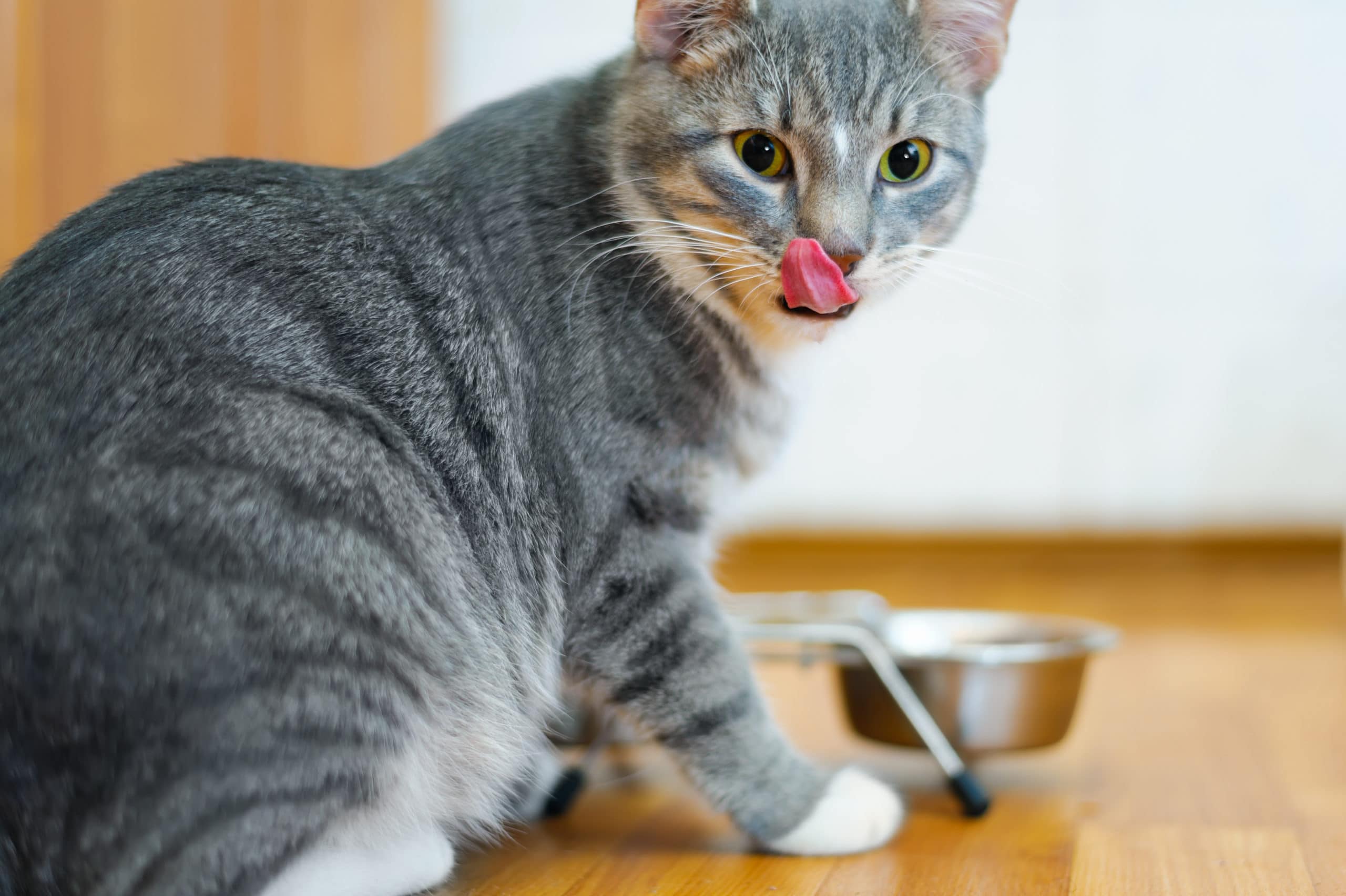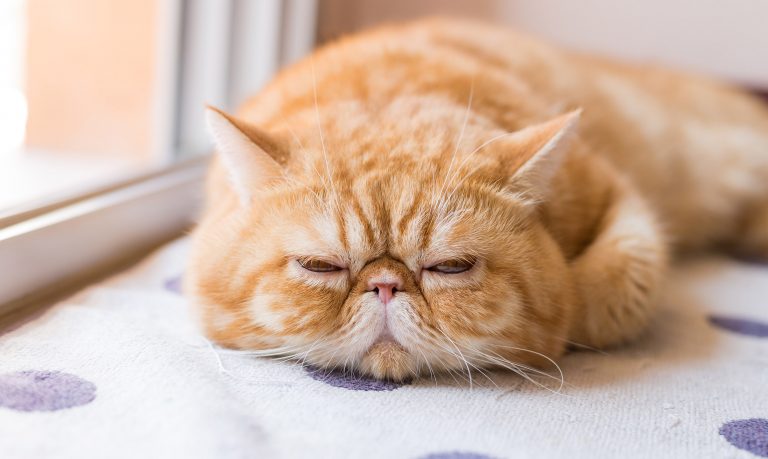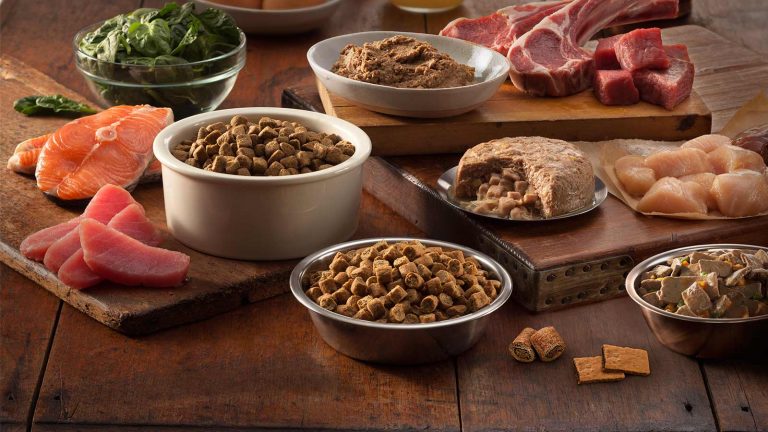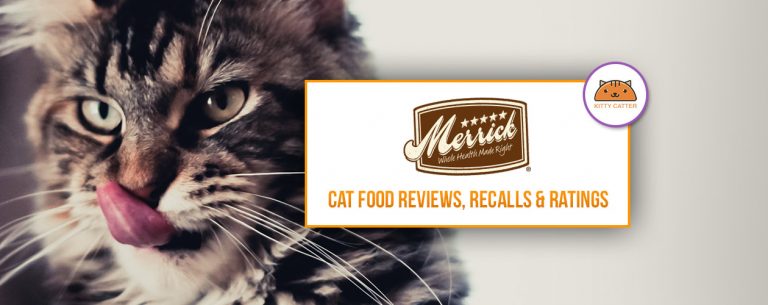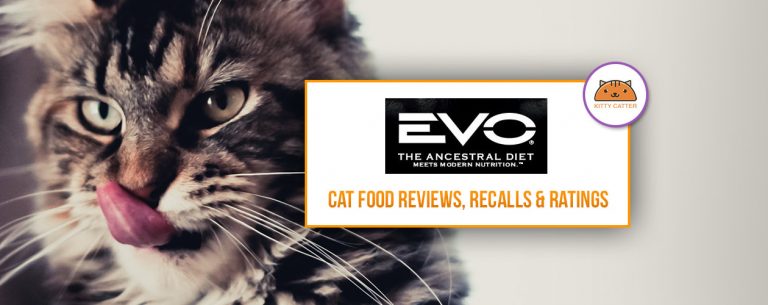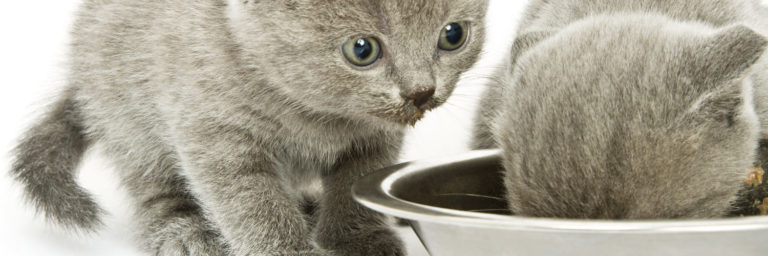Understanding Star Ratings for Cat Food Products
Contents of Article
Not all cat foods are created equal and the quality of the product you feed your cat will have a significant impact on this long-term health and wellness. Just like humans, cats have minimum nutritional requirements that must be met through his daily diet. A high-quality cat food will help to make sure that those needs are met through the use of fresh, wholesome ingredients that are used in a balanced way. To preserve your cat’s long-term health, you should feed him the highest quality cat food you can afford. In order to choose a quality cat food product, you need to understand the basics of cat nutrition and you need to be able to compare those needs to any product you choose. Below you will find a breakdown of what goes into a 5-star cat food product all the way down to a 1-star cat food:
5-Star Cat Food Requirements
A 5-star cat food product will do more than just meet your cat’s minimum nutritional requirements – it will exceed those minimums through the use of fresh, natural ingredients. Unfortunately, you cannot necessarily identify a 5-star cat food simply by looking at the package. Many low-quality pet food manufacturers cover their packages with pretty picture and lofty health claims to lure inexperienced cat owners into believing that their products are better than they really are. In order to identify a 5-star cat food product, you need to know which parts of the product label to focus on and you need to know what you are looking for.
Any cat food product that is formulated to meet the minimum nutritional requirements of cats will carry an AAFCO statement of nutritional adequacy. This statement will read something like the following, “This recipe is formulated to meet the nutritional levels established by AAFCO Cat Food Nutrient Profiles” for [life stage]”. Cat foods can be formulated for all life stages (cats of all breeds, sizes, and ages), for growth (kittens, lactating females, and pregnant females), or maintenance (adult cats). If the cat food package you are looking at contains this statement you can rest assured that it will meet your cat’s minimum nutritional needs. This statement is not, however, a guarantee of quality – you still need to check the guaranteed analysis and the ingredients list.
When viewing the guaranteed analysis for a 5-star cat food product, you want to see a crude protein value as high as possible – the minimum requirement for kittens is 30% and it is 26% for adult cats. For fat, the minimum requirement for both kittens and adult cats is 9%. The higher the protein content, the better, and a 5-star cat food will also have a higher fat content around 15% or more. In contrast to protein and fat, you want to see a crude fiber content as low as possible. Cats are obligate carnivores so they have a very limited ability to digest plant products and very low needs for fiber. The guaranteed analysis may also provide values for other nutrients like omega fatty acids or certain vitamins and minerals, though these things are not required by AAFCO.
After reviewing the AAFCO statement of nutritional adequacy and the guaranteed analysis, the final place to look is the ingredients list – this is the part of the label that will really help you tell a 5-star cat food apart from a lesser product. A 5-star cat food will start with a high-quality source of animal protein at the top of the ingredients list – either a fresh source of meat, fish, or poultry or some kind of named meat meal (chicken meal, salmon meal, etc.). Keep in mind that fresh meats contain up to 80% moisture by volume while meat meals have already been cooked to remove moisture. This being the case, meat meals are actually a more highly concentrated source of animal protein for your cat. Many 5-star cat foods list multiple sources of animal protein, though it is not necessarily a bad thing if they don’t, as long as the product exceeds your cat’s minimum protein requirements and the primary proteins come from animal-based sources.
When it comes to carbohydrates, a 5-star cat food will be gluten-free and grain-free – this is important for the reason already mentioned, that cats are obligate carnivores. Gluten-containing grains and other grains have a high risk for triggering food allergies or sensitivities in cats – they are also much harder for your cat to digest than other carbohydrates. The best carbohydrates for a 5-star cat food come from gluten-free and grain-free sources like starchy vegetables (ex: sweet potatoes) and beans/legumes (chickpeas, lentils, etc.). But remember, you still want the crude fiber content to be fairly low and you don’t want the ingredients list to be dominated by plant-based ingredients.
In general, a 5-star cat food will include more animal products than plant products – especially when it comes to proteins and fats. Animal fats like chicken fat and salmon oil provide your cat with a highly concentrated source of energy and they also help to support his immune system and his healthy skin and coat. Plant-based fats like flaxseed and sunflower seed oil are not inherently dangerous, but in a 5-star cat food they will be supplementary to an animal-based fat. The remaining ingredients in a 5-star cat food should be made up of fresh fruits and vegetables (as natural sources for key nutrients) and healthy supplements. Chelated minerals are always better than traditional synthetic mineral supplements because they have been chemically bound to protein molecules which makes them easier for your cat’s body to digest and absorb. Dried fermentation products are also a 5-star addition – they act as probiotics to support your cat’s digestion.
4-Star Cat Food Requirements
A 4-star cat food fulfills many of the same requirements as a 5-star cat food but there may be a few areas in which the recipe could be improved. Any 4-star cat food will still consist largely of animal-based ingredients and other whole foods – there should not be any by-products or unnamed sources for protein or fat. The main point of differentiation between the 4-star and a 5-star cat food is that a 4-star cat food may include more supplements and it maybe contain one or two ingredients that offer less than optimal quality. Most cat food products contain synthetic supplements to ensure complete and balanced nutrition but synthetic supplements offer limited biological value for cats – natural sources for those nutrients (like fresh fruits and vegetables) are always more valuable. A 4-star cat food may also exclude chelated minerals and probiotic supplements.
In terms of lesser quality ingredients, a 4-star cat food may include more carbohydrates and dietary fiber than a 5-star cat food and they may come from grains or other gluten-containing ingredients. Grain-based carbohydrates are not necessarily bad but they can trigger food allergies or intolerances in some cats. A 4-star cat food may also have a higher fiber content than 5-star cat foods which could have an impact on your cat’s digestion. Too much fiber can be just as problematic as too little fiber. Many 4-star cat foods contain supplementary fiber sources like tomato pomace or dried beet pulp. Again, these ingredients are not inherently dangerous though there is some debate amongst the pet community regarding the long-term effects of these ingredients.
3-Star Cat Food Requirements
A 3-star cat food will still meet your cat’s minimum nutritional needs according to AAFCO Cat Nutrient Profiles, but many of the ingredients will be of a lesser quality than those used in 4-star and 5-star cat foods. For example, a 3-star cat food may or may not list a whole animal protein as the first ingredient. Some 3-star cat foods do use fresh meat, poultry or fish as the main ingredient but there are also many that make use of by-product meals and unnamed meat meals as their primary protein sources. While these ingredients may not necessarily be harmful, it is difficult to judge their quality because the source is unknown. By-products and unnamed proteins and fats can vary significantly in quality from one batch to another so you never know what you are going to get.
In terms of the nutritional content for a 3-star cat food, it will meet your cat’s minimum requirements but it is unlikely to go much higher than the minimum values for crude protein and crude fat. Many 3-star cat foods only provide 9% to 11% crude fat (which is barely above the minimum) and crude protein in the 25% to 27% range. You may also find that 3-star cat foods have a much higher fiber content because they rely more heavily on plant-based ingredients than on animal-based ingredients. A trick that many low-quality pet food manufacturers use is to include plant proteins in their products – things like pea protein, potato protein, beans, and legumes – to increase the protein content of their products without adding more meat. This helps to keep their own costs down.
In addition to including more low-quality ingredients, a 3-star cat food may also include a higher number of ingredients than higher quality products. Because 3-star cat foods are frequently made with low-quality and semi-questionable ingredients, more supplements and additives are needed to make the product palatable and nutritionally complete. You may notice more ingredients that have strange-sounding names as well as more colors, flavors, and preservatives. This may be because the extrusion process (the cooking process through which traditional kibbles are made) involves exposing the ingredients to high heat which can destroy much of their nutritional integrity. To remedy this problem, synthetic supplements are added to replace the nutrition that is lost.
2-Star Cat Food Requirements
The biggest sign of a 2-star cat food is the use of a plant-based ingredient at the top of the ingredients list. Cats are obligate carnivores which means that they have a biological need for protein and the majority of their nutrition needs to come from animal-based ingredients. Cats have a very limited ability to digest plant products so a cat food that is heavily plant-based will not be good for your cat. Not only will it fail to provide more than the bare minimum level of nutrition, but it also has a high risk for triggering food allergies, sensitivities, and other digestive issues. Furthermore, many 2-star cat foods rely heavily on corn, wheat, and soy ingredients – these offer very little nutritional value for cats and they are very hard to digest.
In terms of protein and fat, many 2-star cat foods rely on plant-based sources for these things as well. Plant proteins like pea protein and corn gluten meal are frequently used in 2-star products to increase the total protein content without adding more meat. In fact, a 2-star cat food may not include any animal-based protein at all except, perhaps, for some kind of by-product. These products are also frequently loaded with non-nutritive fillers like wheat flour or ground yellow corn and many of the fats are likely to come from plant-based sources as well. Plant-based fats like flaxseed and sunflower seed oil are not necessarily bad for your cat, but they offer lower bioavailability than animal fats and they may not offer the kind of omega fatty acid balance that your cat really needs.
Most 2-star cat foods are produced using the extrusion method which, as it has already been mentioned, often results in the loss of most of the original nutritional integrity of the raw ingredients. This means that 2-star cat foods rely heavily on synthetic supplements to add back the nutrients that are lost in cooking. Most 2-star cat foods do not include chelated minerals and they are also unlikely to include prebiotic fiber or probiotic supplements for digestive support. Most 2-star cat foods also make use of artificial additives like colors, flavors, and preservatives. In many cases, these additives are only included to make the product appear more pleasing to the consumer – they may not provide any actual benefit for your cat except perhaps to make the product more palatable.
1-Star Cat Food Requirements
If you are buying your cat a 1-star cat food, you should seriously reconsider. A 1-star cat food may meet your cat’s most basic nutritional requirements but it is likely to do your cat more harm than good. Most 1-star cat foods are extremely carb-heavy and made almost exclusively with plant-based rather than animal-based ingredients. These products are loaded with plant proteins like corn gluten meal and pea protein as well as other grain-based fillers made from corn, wheat, and soy ingredients. The carbohydrate and fiber content of these products is usually very high – often so high that they trigger food allergies, sensitivities, or other digestive issues in your cat. Simply put, a 1-star cat food can make your cat very sick and that can lead to high vet bills for you – the money you save by buying a low-quality food will bounce back at you several times as much in veterinary bills.
Another problem with 1-star cat foods is that they rely very heavily on by-products, unnamed ingredients, artificial additives, and synthetic supplements. By-products and unnamed ingredients such as poultry by-product meal or animal fat are not necessarily harmful, but they certain can be – you also have to realize that the quality and safety of these ingredients varies greatly from one batch to another. Artificial additives play an important role in 1-star cat foods as well because they are necessary to improve the aroma, flavor, and appearance of the product in order to make it more pleasing to consumers and more palatable to cats. Synthetic supplements are also used very heavily in low-quality cat foods because they are needed to replace the nutrients lost during processing. For as many supplements are needed in these products, many 1-star cat foods have ingredients lists that include dozens of ingredients. Though this is not always the case, it often works out that the higher the quality of the product, the shorter the ingredients list.

